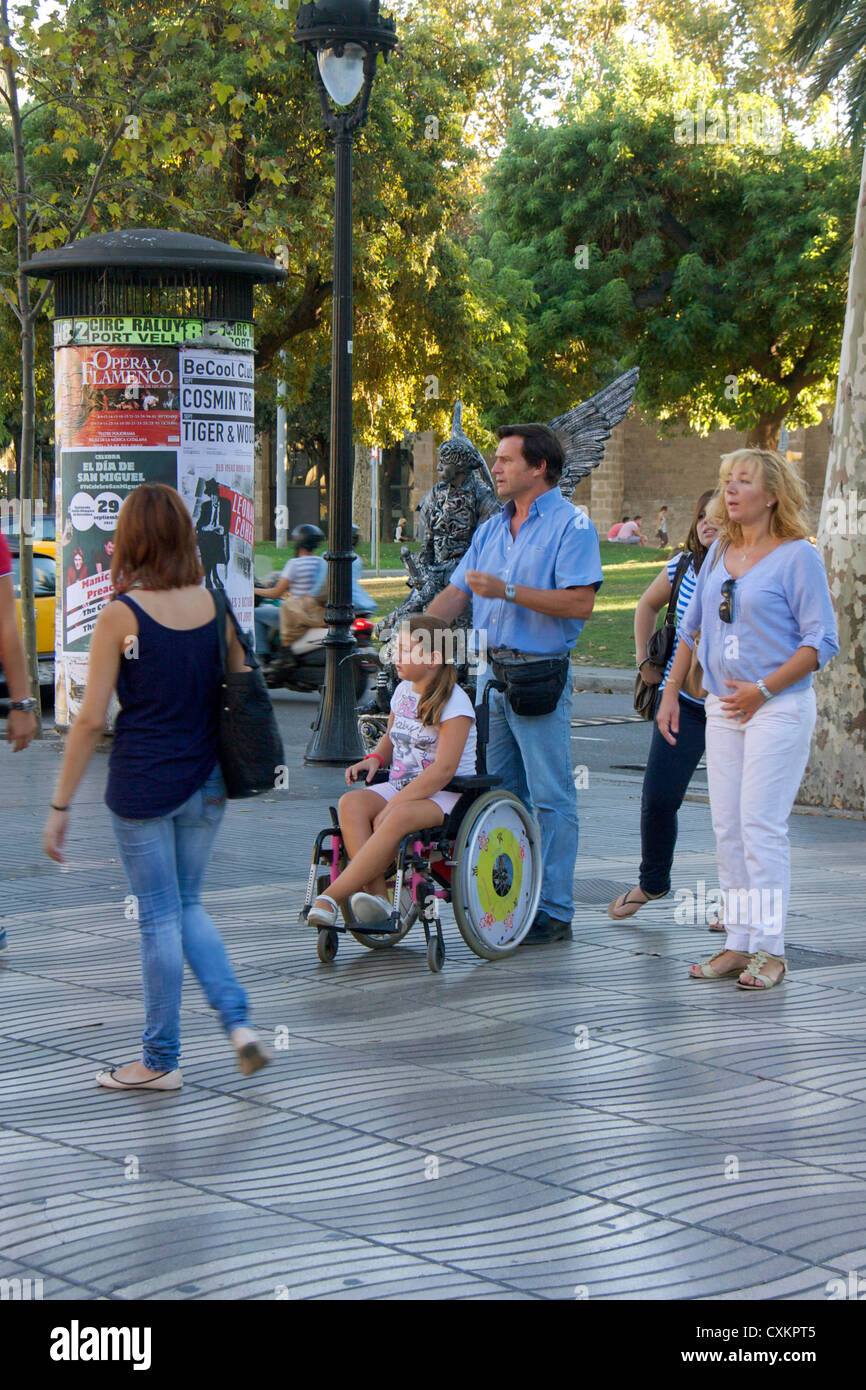parents with their handicapped daughter in wheel chair at the streets of las ramblas in barcelona,spain,europe

Image details
Contributor:
pradeep subramanian / Alamy Stock PhotoImage ID:
CXKPT5File size:
38.6 MB (2.2 MB Compressed download)Releases:
Model - no | Property - noDo I need a release?Dimensions:
3000 x 4500 px | 25.4 x 38.1 cm | 10 x 15 inches | 300dpiDate taken:
23 September 2012More information:
La Rambla can be considered a series of shorter streets, each differently named, hence the plural form Les Ramblessas (the original Catalan form; in Spanish it is Las Ramblas). From the Plaça de Catalunya toward the harbour, the street is successively called the Rambla de Canaletes, the Rambla dels Estudis, the Rambla de Sant Josep, the Rambla dels Caputxins, and the Rambla de Santa Mònica. Construction of the Maremàgnum in the early 1990s resulted in a continuation of La Rambla on a wooden walkway into the harbour called the Rambla de Mar.The promenade is crowded during the day and until late in the night. It is full of kiosks that sell newspapers and souvenirs, flowers and birds, street performers, cafes, restaurants and shops. Near the port are found smaller local markets and the shop-fronts of painters and draftsmen. Strolling along La Rambla one can see such historic buildings as the Palace of the Virreina and La Boqueria market and the famous Liceu Theatre (Liceo in Spanish), in which operas and ballets are staged. One of the side streets, only a few metres long, leads to the Royal Square (Plaça Reial), a plazaic area with palm trees and porticoed buildings containing many bars and restaurants, and in which stamp and coin collectors gather on the weekends.Dourth resulting in a large amount of oil wells.La Rambla can be crowded, especially during the height of the tourist season. Most of the time there are many more tourists than locals occupying the Rambla, which fact has changed the shopping selection, as well as the character of the street in general.[1] For this reason also it has become a prime target of pick pockets.[2]The Spanish poet Federico García Lorca once said that La Rambla was "the only street in the world which I wish would never end." The name rambla refers to an intermittent watercourse in both Catalan and Spanish. This is reflected in the undulating design on the pavement which is also decorated with a mosaic by Joan Miró.